If there’s any region of Italy that qualifies as the “little black dress” of travel destinations, it’s Tuscany, impeccably tailored into a universally attractive luxury vacation, especially if food and wine are your thing. Whether the visit is a first or fifteenth, there’s no question that if you pick your destinations well, you’ll go home satisfied yet ready to come back for more. To the east, Tuscany’s wine country beckons with a rich tapestry of five-star spa-resorts, interspersed with artisanal wineries and farms. Anybody craving a jaunt off the tourist track can head west toward the Atlantic Coast to spend time in sorbetto-hued Viareggio.
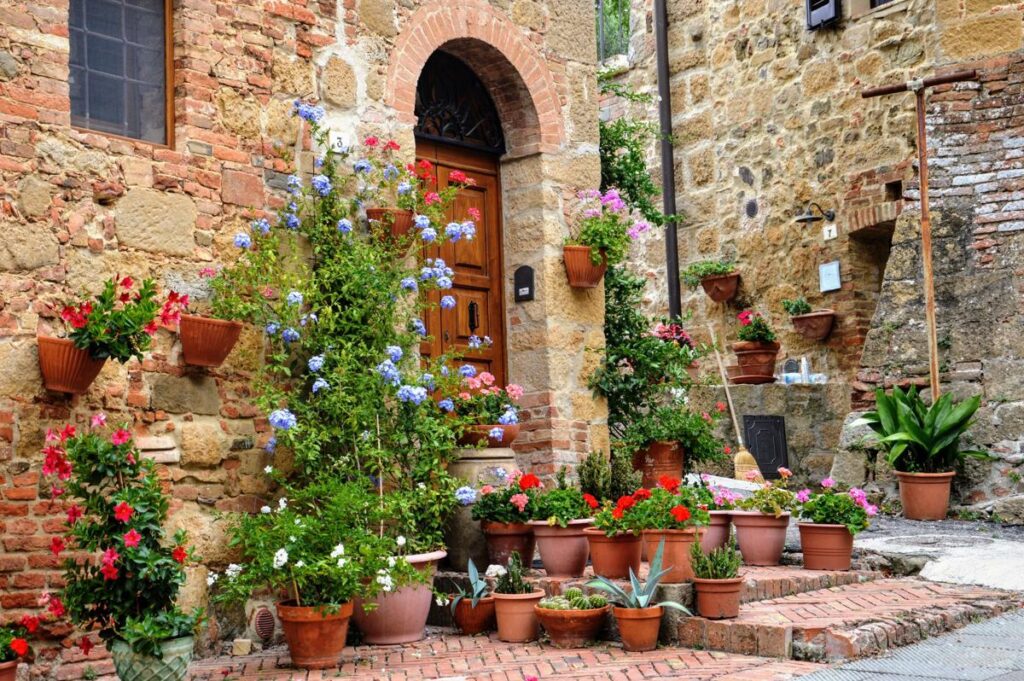
In late 2021, several style-savvy hoteliers, winery operators, and even a feisty cooking school owner demonstrate that moving Tuscany’s food traditions forward should not be at the expense of terroir or tradition.
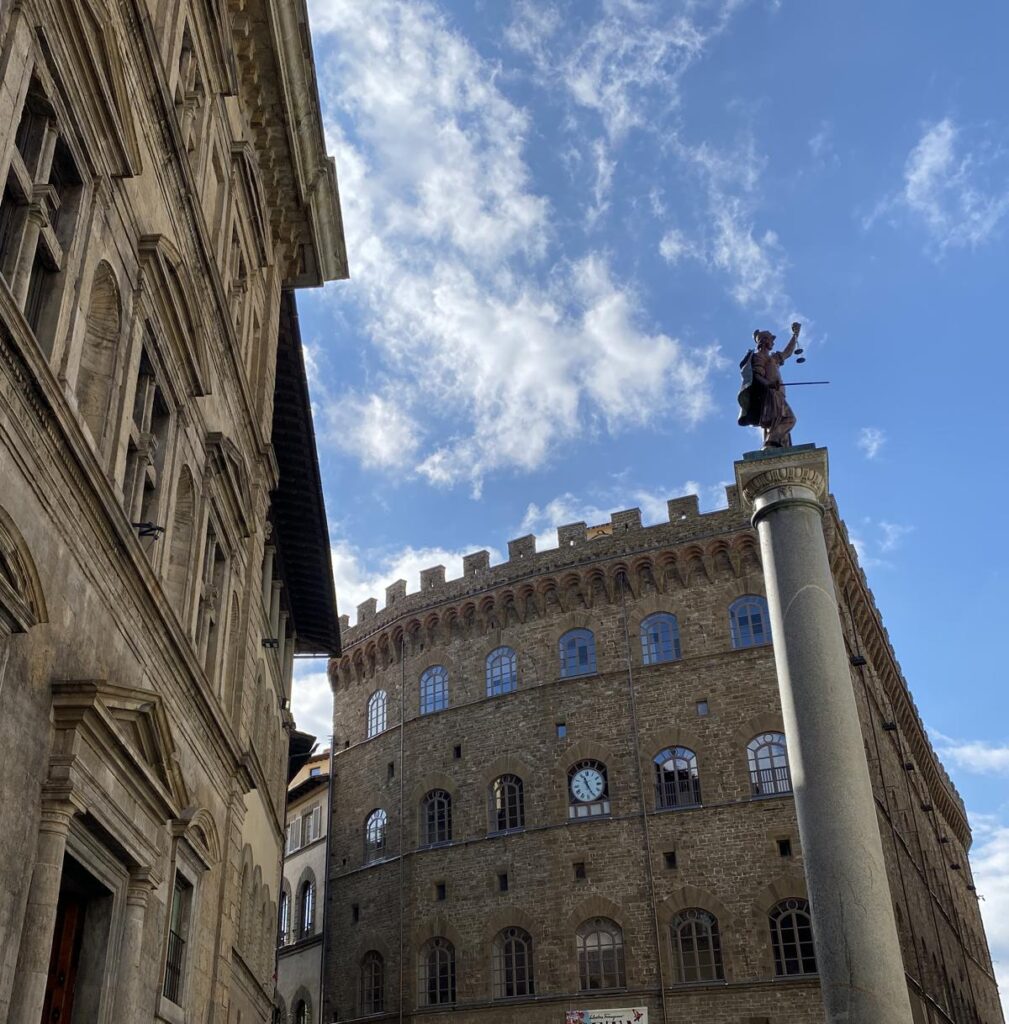
Florence: Città Magnifica!
As Florence remains one of Italy’s great cultural hubs, it’s interesting to experience how its living legacy is expressed in two different luxury hotels: One dedicated to making the city’s Renaissance glory exciting to 21st-century travellers. The other offering a dynamic, minimalist take on Florentine style. The fine dining restaurants in each locale capture those sensibilities.
Antica Torre di Via Tornabuoni 1, a lovingly preserved mid-13th century family villa-turned boutique hotel, reopened in fall 2021 after a thoughtful refurbish by Florence-bred and London-based interior designer Angelica Frescobaldi. To achieve balanced elegance, she curated and restored furnishings and artifacts that capture the tastes of its original occupants, and then presents them against a clean rose and dusky green backdrop that also nicely frames views of the Ponte Santa Trinita, Ponte Vecchio, the Duomo, and other magnificent churches and landmarks. While it has amenities (wifi, up-to-date electronics and entertainment devices, organic skincare toiletries and good heating) discerning guests will expect, the best involves one of Florence’s greatest pleasures — a complimentary breakfast and fresh cappuccino on a rooftop terrace with one of the best 360° views in town.
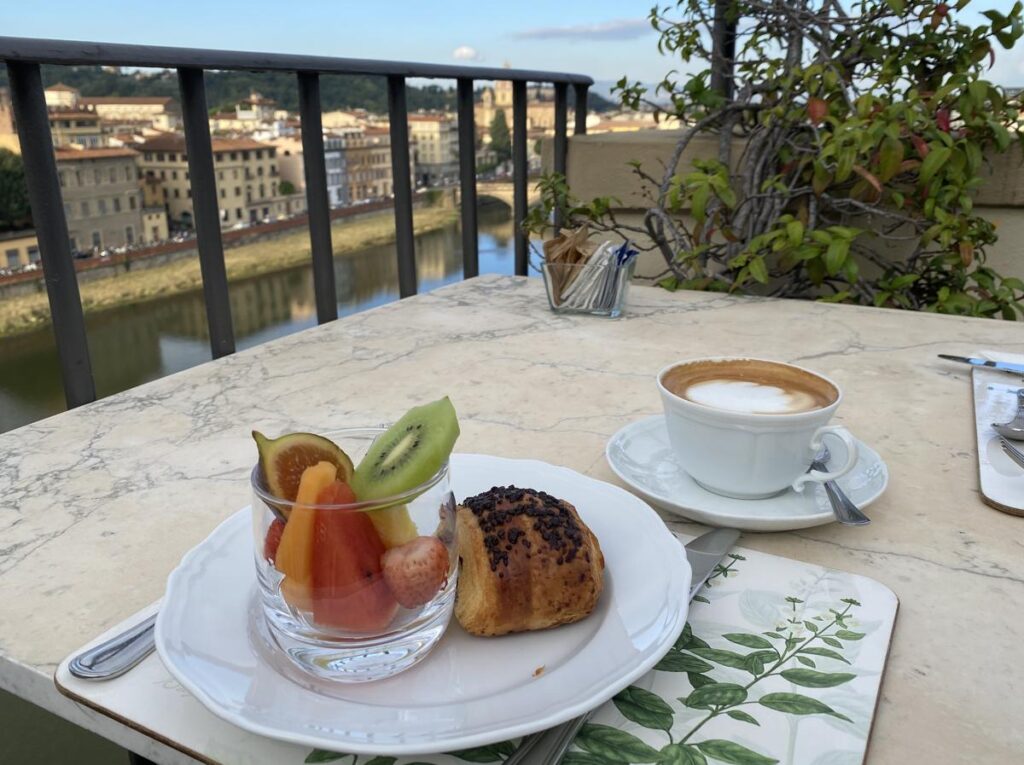
The full-service restaurant, The Tower, coming in Spring 2022, is just as meticulously thought out, based on preview dinners staged during my stay. While seasonal menus will be planned to highlight Florentine recipes that stand the test of time, each dish will be subtly updated with the farm-to-table touches people crave when they plan a visit to Tuscany. The restaurant staff, along with an astute bar/mixology team, assures that simple can be bold and luxurious.
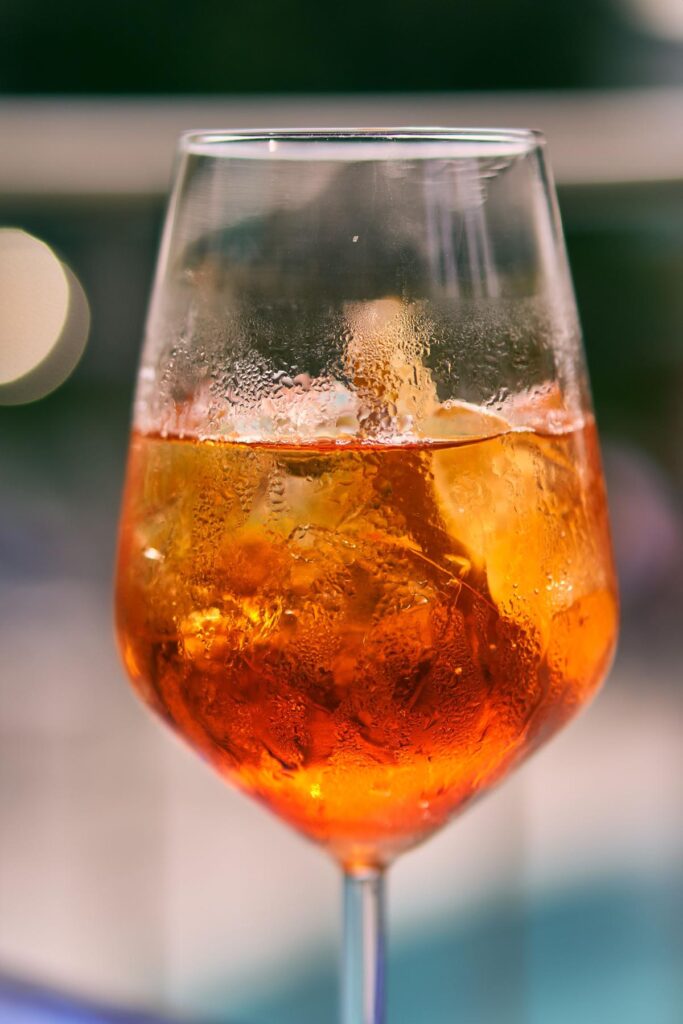
Just as Frescobaldi painstakingly selected items for the hotel’s decor, executive chef Carlos Curasma and his kitchen team follow suit by using raw ingredients from hand-picked purveyors, such as fresh fish from the gulf of Follonica, beef from Chianina and saffron from Palagiaccio, and produce from similarly well–reputed farms.
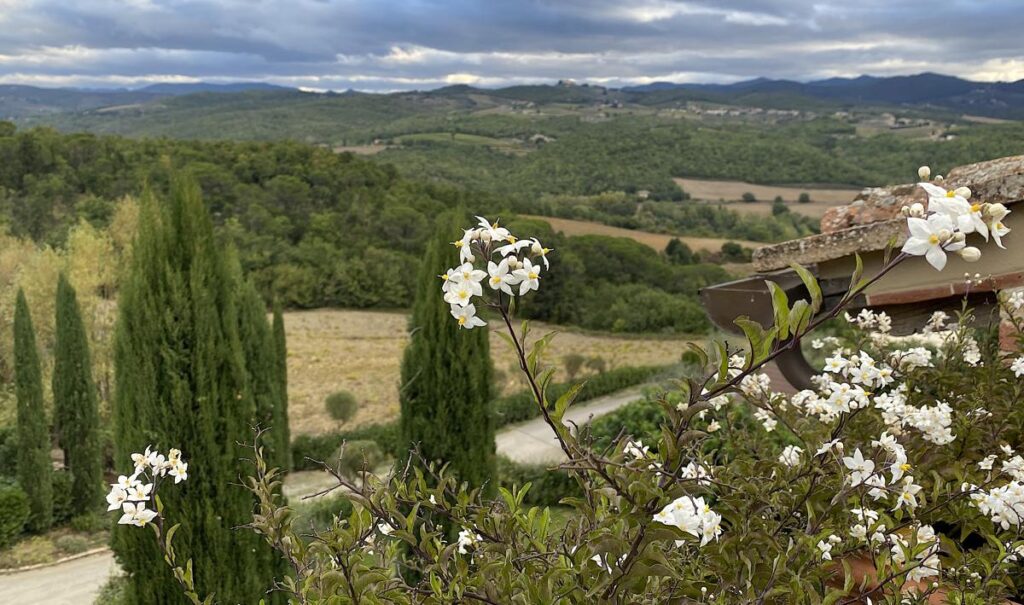
The kitchen’s little updates make a big impact on starters like Chickpea Soup with crispy black cabbage and Pappa al Pomodoro (a Tuscan tomato soup bread pudding with basil and mozzarella), and hand-crafted ravioli filled generously with seasonal vegetables or burrata cheese, topped with eggplant pesto, cherry tomato confit, and crystallized basil. Main courses of Guinea fowl stuffed with olives and Tuscan herbs on a nest of sautéed chard; and Tagliata Chianina steak with roasted potatoes and Tuscan herbs, delight the senses with flavour and aroma. Kiwi sauce gives panna cotta for dessert a wonderful, palate-cleansing twist.
Dimora Palanca, opened in summer 2021 by hotelier Laura Stopani, epitomized modern luxury and good taste back in the 19th century as a private home that eventually became a destination for artists, musicians and other cultural influencers of the day as its owner was a patron of the arts. Stopani’s streamlined take on 21st-century bohemian chic dovetails with nearby neighbourhoods that are themselves undergoing a renaissance. Sensory features establishing the hotel as an urban oasis include its art-gallery, walled courtyard garden set off by fragrant jasmine plants and seasonal flowers; large en-suite bathrooms with marble interiors, large whirlpool bathtubs and chromatography rain shower heads; top-tier Simmons mattresses; and luxury bathroom amenities by Florence perfumer Lorenzo Villoresi.
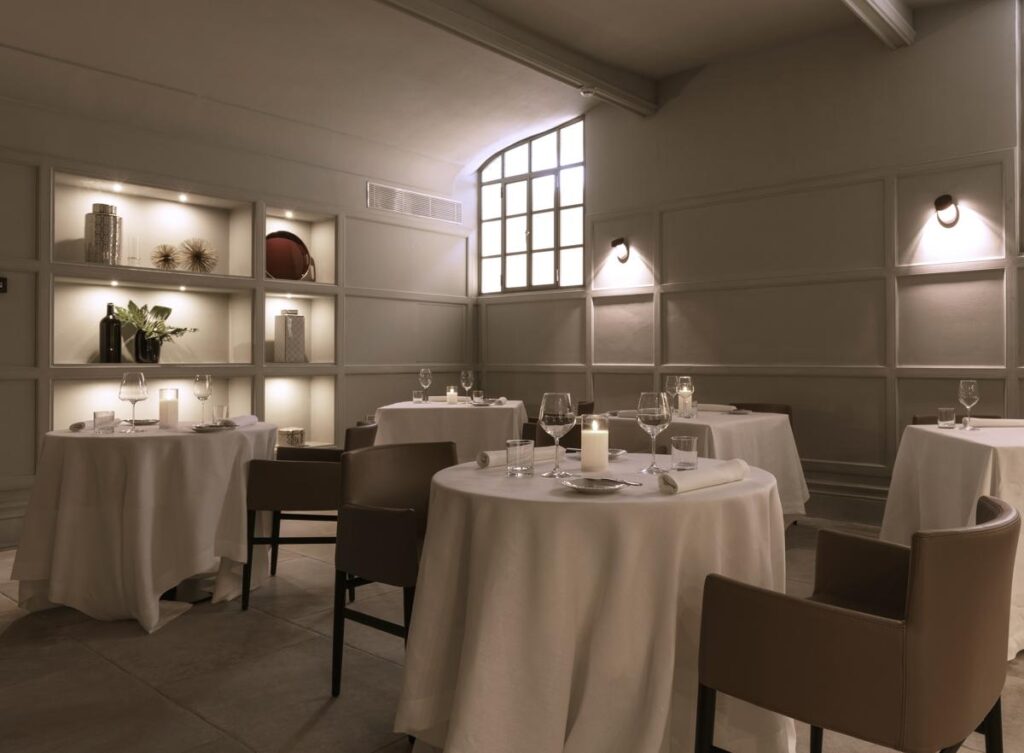
This spirit runs through its subterranean 20-seat restaurant, Mimesi, set into the villa’s original kitchen, where guests can see and taste chef Giovanni Cerroni’s mission to package traditional Tuscan and Southern Italian ingredients in unexpected ways. As each sculptural, stylized course is served (the multi-piece amuse bouche and post-dessert petit-fours presentations are kaleidescopic), it’s easy to observe Cerroni is influenced by modern culinary techniques coming out of Spain, Japan and other locales where he spent time refining his craft.
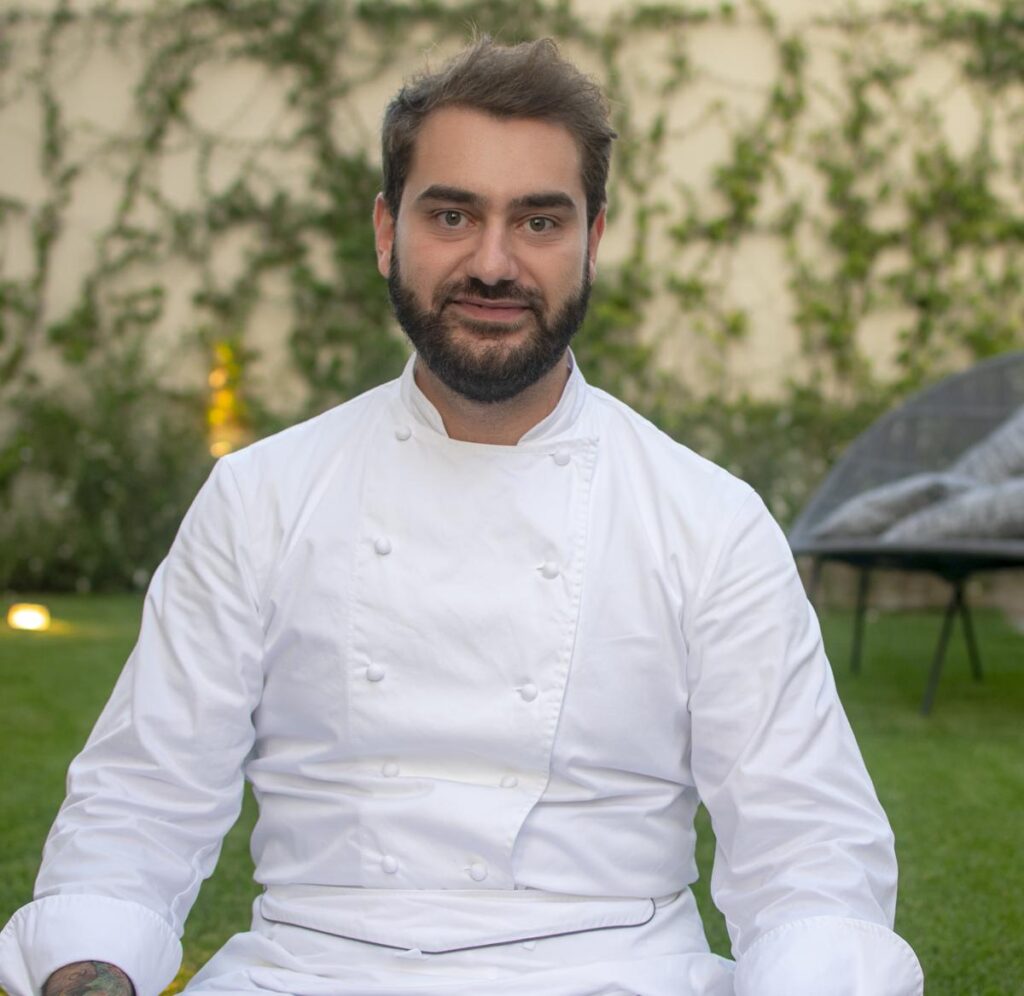
Calling his ambition an endeavor to push regional Tuscan cuisine forward is almost an understatement, but most of the dishes (such as “Cipolla, Pecorino and Beurre Rouge, a deconstructed onion tart; an “olive” opening up to expose a liquid salad of marinated sardines; a green pasta course with unexpected umami flavours) play beautifully. The bar, which flanks the casual dining room (where breakfast and informal meals are served by day), is a showcase for small-batch craft gins and other spirits, as well as cocktails with regional culinary flair.
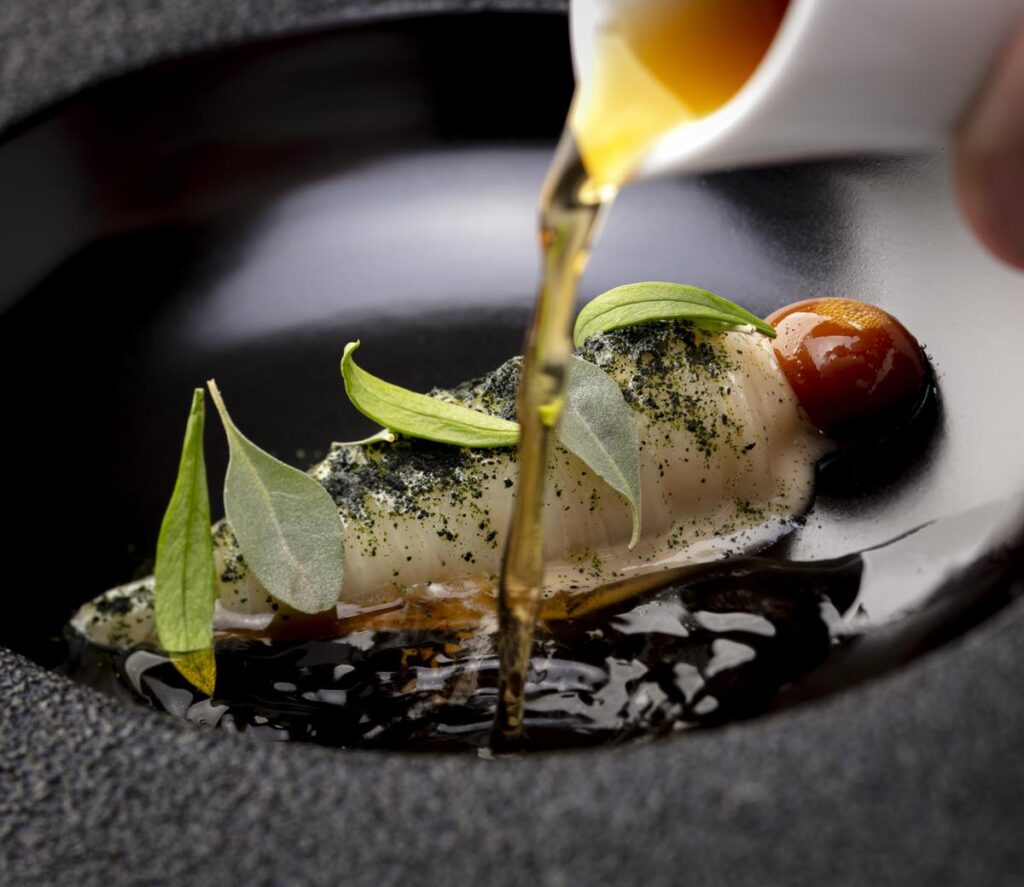
Hotel Le Fontanelle: Overflowing With Great Taste
Hotel Le Fontanelle reopened in late 2021 not long after Europe reopened to North American travellers. The family that owns the property was extending its five-star reputation with a subtle refresh of its original site (the remnants of an entire medieval village) as well as bringing its even-more-exclusive Club House to life.
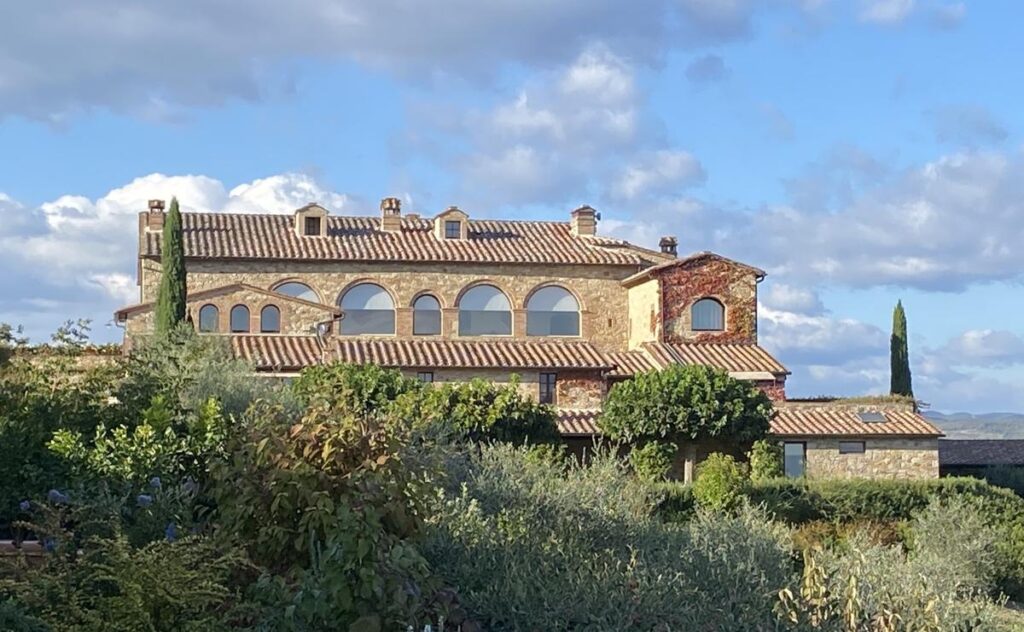
The aesthetic of the resort is heavily informed by family matriarch Giuseppina Bolfo and her multi-decade career in fashion, decor and hospitality. Her brother and other members of the family are also involved with daily operations. The culinary nucleus of the property is the restaurant La Colonna, which complements the culinary experiences offered at nearby destinations such as Vallepicciola Winery (also owned by the family), Siena, and the Farm Le Pietre Vive di Montaperti, home of the Cooking Class with Nonna Ciana.
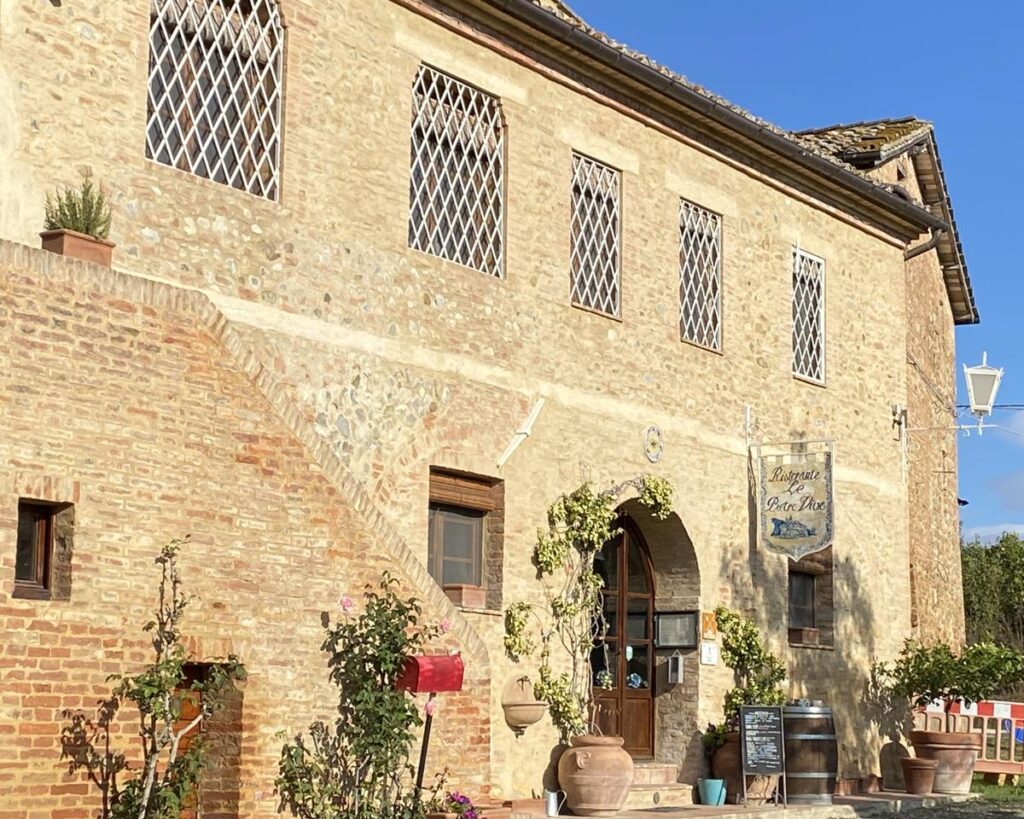
La Colonna’s menu, by executive chef Daniele Canella, is conceived as a “revival of traditional Tuscan and Chianti dishes” that he updates with a careful selection of raw ingredients combined with unexpected techniques to bring finished dishes into the 21st century – one example, a root vegetable salad with roasted and cold components arranged on the same plate. A collaboration with Giuseppe Iannotti, Michelin-starred chef of Kresios di Telese restaurant in Benevento, who is designing The Club House menu, promises to make the property’s gastronomic landscape even more interesting.
Giuseppina Bolfo and husband Bruno are clearly not ones for retirement, which is also evidenced by their taking on the development of Vallepicciola, a winery noted internationally for its Sangiovese wines and Chianti Classico. The vineyards scattered over 265 hectares on hills flanking the Arbia river, planted, or soon-to-be-planted with Italian and international grape varietals, boast an astonishing array of terroirs, including clays, calcareous marl, bluish marl, tuff, sandstone and sand. Even on a rainy day, there’s no better spot to enjoy the winery’s award-winning creations with a Tuscan cutting board lunch featuring local cheeses, honey and jams, charcuterie, bruschetta and seasonal vegetables.
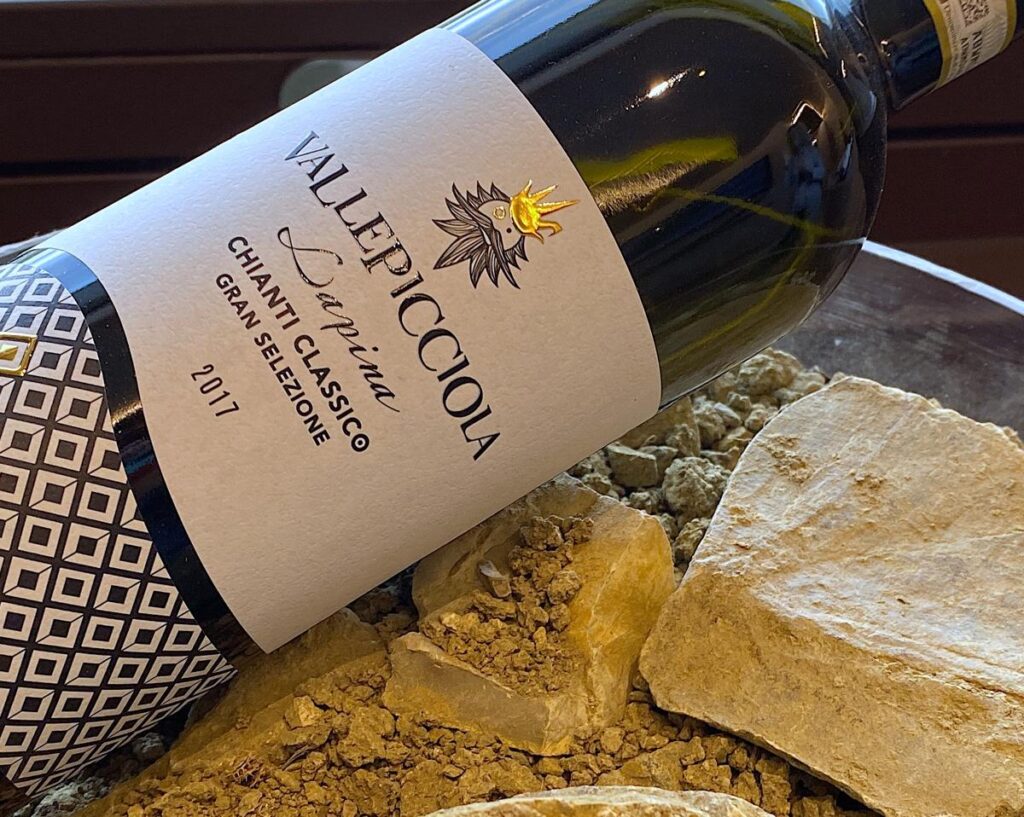
The modern adaptation of generations old food traditions continues at “Cooking Classes with Nonna Ciana” at Farm Le Pietre Vive di Montaperti. While you learn how to make pasta from scratch, craft exquisite desserts with fresh fruit and flaky pastry, and proper handling of truffles — all simple, foundational recipes in Tuscan cooking, Nonna Ciana is nobody’s granny. She’s sharp-witted, opinionated, and uses the same tough love approach when teaching class participants as she does with the full-time culinary students who help demonstrate the steps of every recipe. While she ensures participants will actually use the souvenir book of recipes they get after their meal and class completion diploma, she has us looking forward to the days when her charges will be taking over restaurant kitchens in Italy and elsewhere.
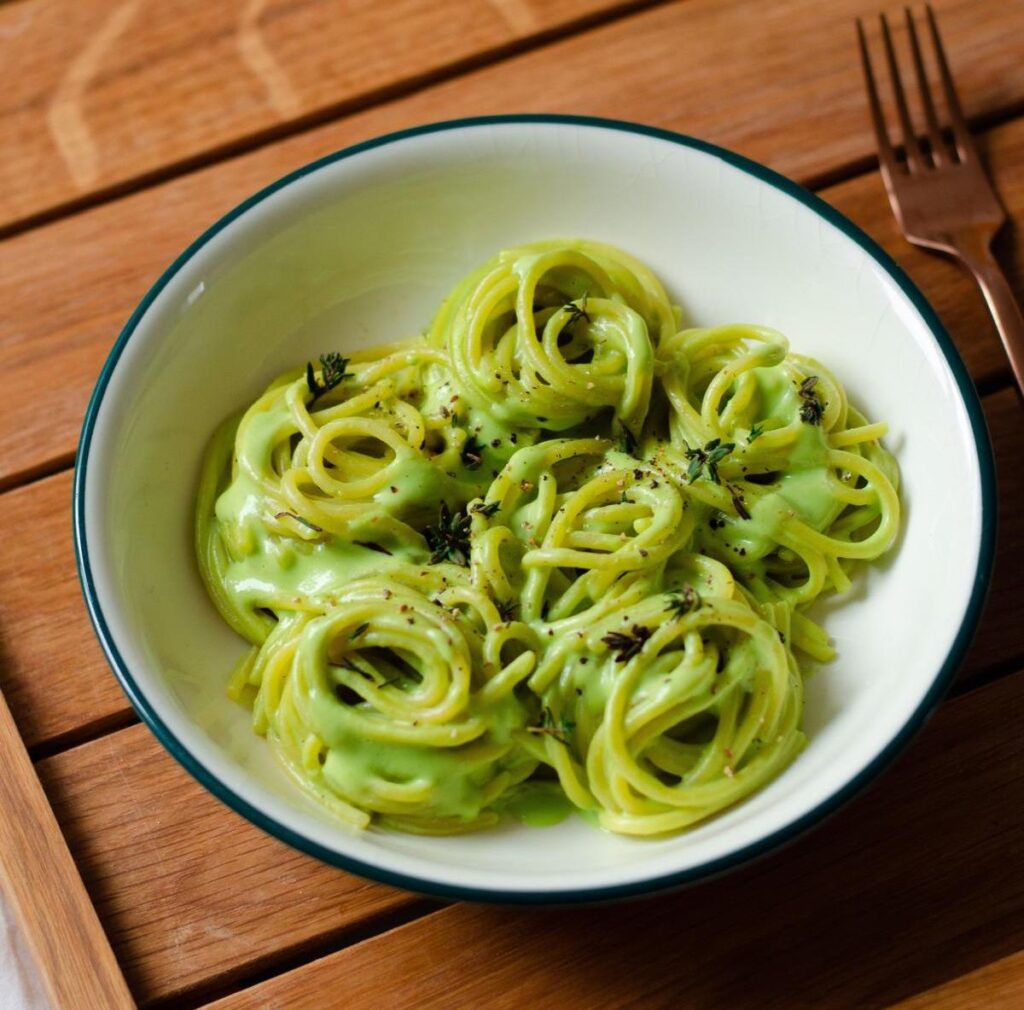
Elsewhere in the Tuscan heartland, MonteRossola in Volterra is worth a visit, not only for its interesting concept (a winery combining the Stockholm-based owners’ Swedish work ethnic and passion for Italian wines) but also the fact that this project ended up having a wonderful raison d’etre — bringing a long forgotten wine region back from the brink. While Volterra was primarily a wheat production region serving the pasta industry after 1955, the owners realized that limestone, fossils, stones and seashells found in its soils (technically known as Franco Argilloso ricco di scheletro or sassolini) give grapes cultivated there depth and minerality, resulting in crisp, smooth, modern wines.
Viareggio: Fewer Crowds, More Authenticity
Lucca, described as a “mini-Florence” with its boutiques and exquisitely designed churches, nestled perfectly into its medieval walls, is one of Tuscany’s biggest draws outside of Florence. This is why any seasoned traveller will want to consider a stay in Viareggio, a small, unpretentious Atlantic Ocean beach town. The recently revamped Hotel Plaza e de Russie, the city’s oldest luxury lodging (opened in 1871, and a popular hangout for literary figures and Russian royalty in the 1900s) is a beautiful place to take advantage of its unhurried pace, unpretentious vibe, and easy access to Lucca, Pisa and other quaint towns.
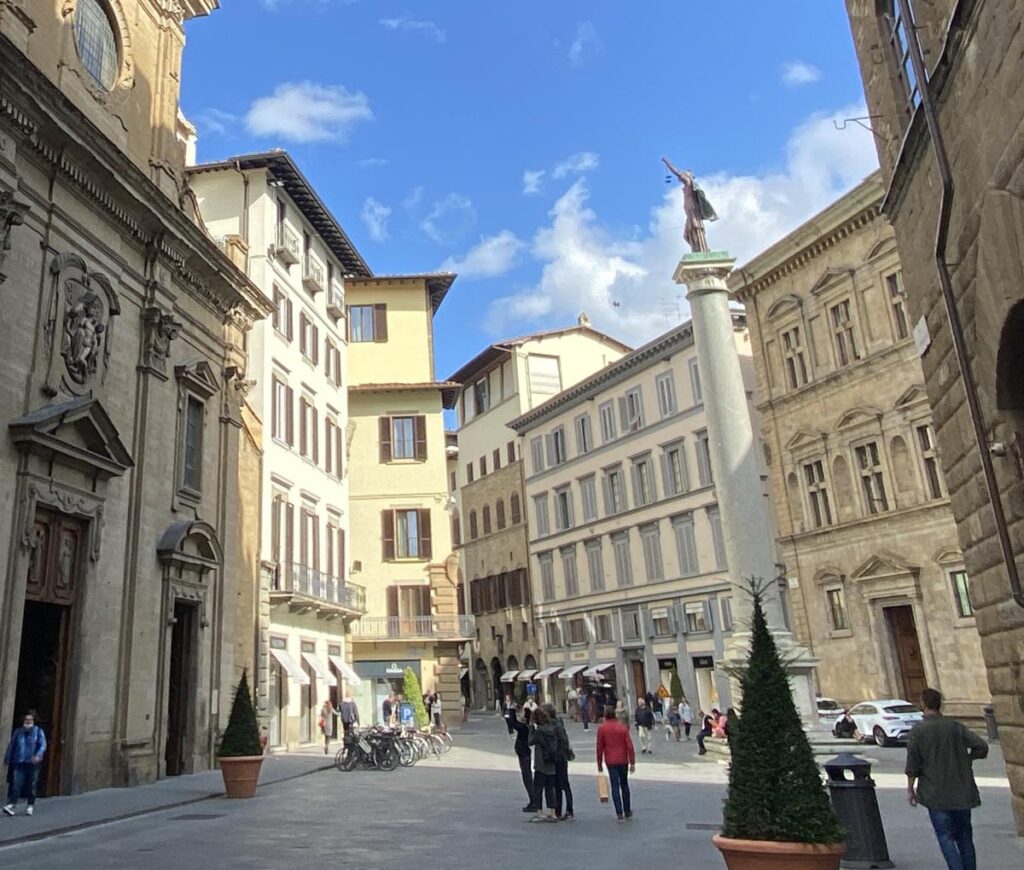
After more than a year of major renovations, Hotel Plaza e de Russie reopened in 2021 as a Relais & Chateau property under the ownership and management of Salvatore Madonna. While the hotel’s bones are elegantly founded in the Belle Epoque, Madonna decided to reintroduce it to the world with an assist from local art galleries and artists to create a fresh beach town look with interiors that seem a touch inspired by Miami Beach, circa 1955. He also wanted to bring the fine dining venue, Ristorante Lunasia, down to street level and put the imaginative, Michelin-starred chef Luca Landi on board to reinvent local dining.
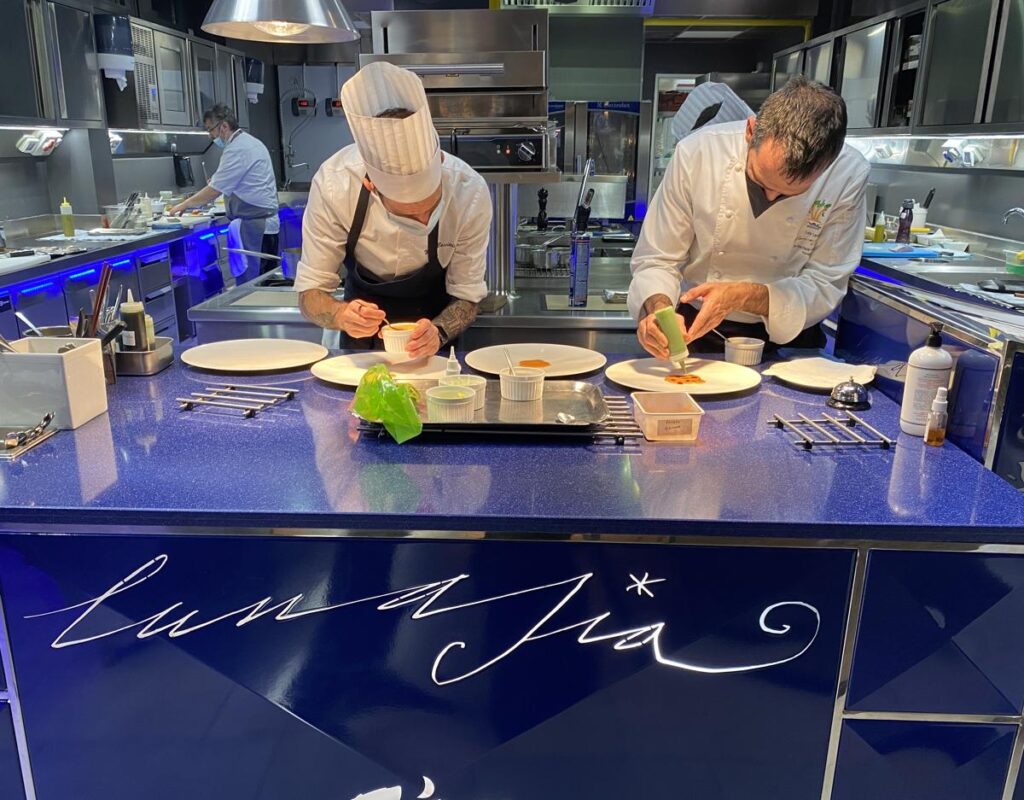
It is fascinating to observe how Landi and his international team delicately balance Western and Eastern flavour profiles at Lunasia (an Etruscan word meaning “serenity”). The Chef’s Table meal begins with a “tree of life” appetizer featuring a breadstick shaped as a branched tree, adorned with heirloom tomatoes stuffed with soft cheese, baby asparagus, salmon roe and whitefish caviar, with fresh herb leaves and breadcrumb roots, followed by a high concept tuna salad with mayonnaise ice cream. Subsequent courses are mostly seafood driven, with locally caught fish (gilthead bream, mullet, and other whitefish in season) and seafood adorned with delicate sauces and seasoning whose complex flavours unspool on the palate. The simple but lush pasta course, freshly baked bread, and desserts provide a solid counterpart for the delicate seafood courses.
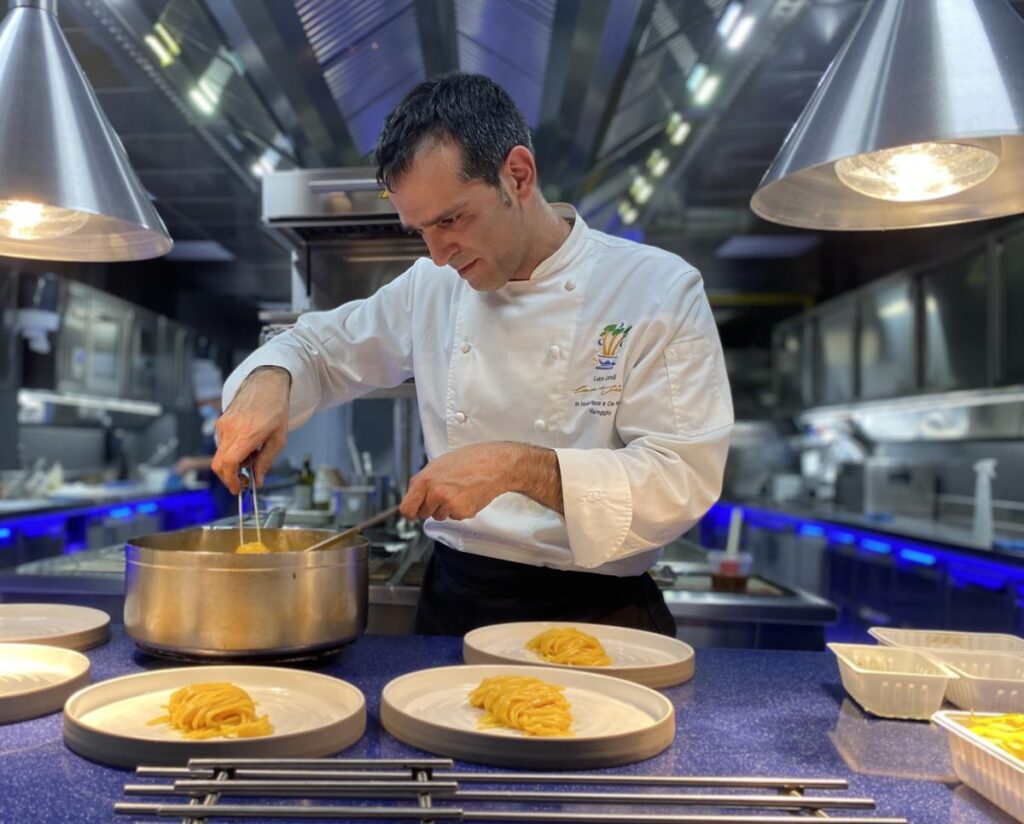
And in Viareggio, when not taking in Landi’s artistry, you’ll find neighbourhood favourite La Rusticanella, offering supreme Sicilian-style pizza-by-the-slice as well as gelato shops and trendy bars across the street with amazing beach views unhampered by large crowds.
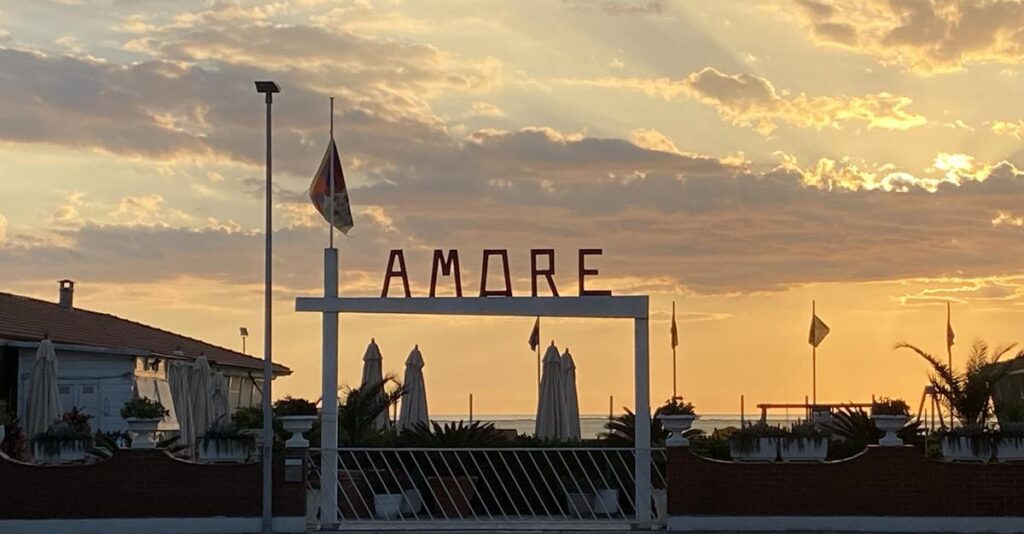
Click here for Nonna Ciana’s recipe for a creamy potato soup with truffle. And here for another cocktail recipe from mixologist Ranjula Wickrama.


